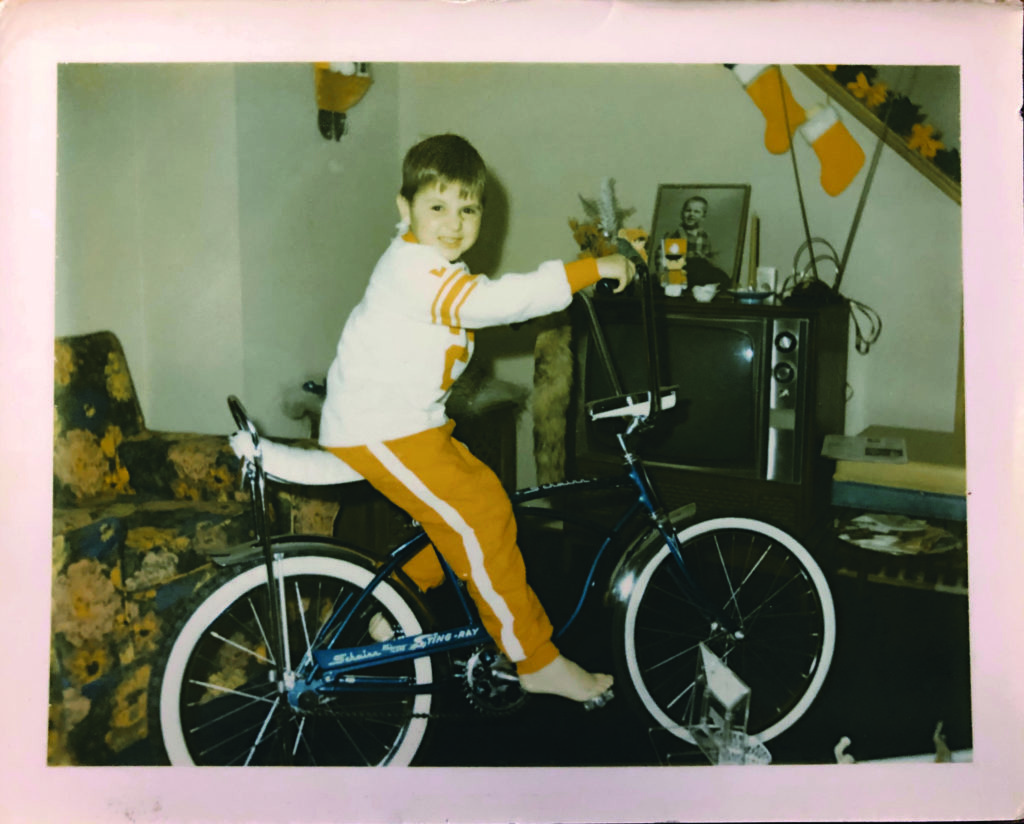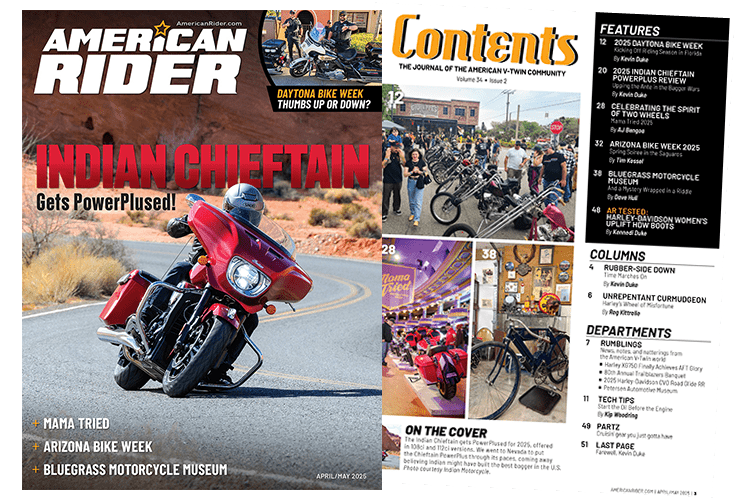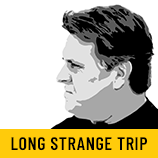Being in the bike biz (for 40-some years now…wow) I’m naturally involved in a lot of bike-biz discussions. The most common topic? The crash – and current shrunken size – of the moto market, along with the dearth of new riders entering our wonderful sport, and how to change that. I keep hearing talk of some magic bullet that would boost new bike sales, ridership and interest to pre-2008 levels: the OEs should do this or that on the marketing side; they should pay more attention to women riders; and that producing this motorcycle or that motorcycle would change things.
It’s mostly blather.
Sure, OEs and aftermarket companies and industry consultants could always do a better job of marketing our sport to the uninitiated, or to the burgeoning female market, or by building a particular motorcycle. (A street-legal Harley flat tracker that looked just like Jarod and Sammy’s race bikes slides instantly to mind). But this is all scribbling in the margins.

Truth is, new-bike sales are half of what they were in the early 2000s and are not coming back anytime soon due to simple demographics. We baby boomers (who have all the money and the vast majority of the world’s motorcycling love) are older, already own lots of very good motorcycles, and are dying in significant numbers every year. And younger folks are largely risk-averse, less mechanically oriented, not into having a driver’s license the day they turn 16 as we were (WTF?!), and are in large measure turning out to be a word I simply cannot use in this space – but it starts with “P”, ends in “S” and has a U and a couple of Ss and an IE in the middle.
Us boomers – those born between ’45 and ’65 – are the same folks who lusted after Harleys and Triumphs in the bad-ass wake of the The Wild One and Easy Rider (Peter Fonda, God rest ye soul), those who became ‘the nicest people’ on Hondas in the ’60s and ’70s, and those who worshipped – and still worship – the gift the late Bruce Brown gave us in 1971 with On Any Sunday.
We took motorcycling on a wild ride, pushing sales and racing and participation to never-to-be-seen-again numbers. We took a short break in the ’80s to have families and build careers, then came roaring back in the ’90s and ’00s, buying sportbikes and cruisers and tourers by the bazillions, fueling the wave that kept everyone fat and happy right up until the U.S. Congress fueled the sub-prime mortgage crisis, which splashed gasoline on an already smoldering recession. Boom. All gone. It would have happened eventually anyway, though more slowly. Which may have been even more painful.
And as much as we’d love it, those golden years ain’t coming back … so we as an industry and a community need to get used to it. Since we’re a smaller market than we were, we have too many OEs, and (as much as I hate to say this) need several weaker ones to disappear.
I see that the Motorcycle Industry Council has hired the consultancy firm Centauric to study and come up with solutions to our dilemma, and I wish them luck. But I’ve seen and read the buzzwords and clichés on the company’s website before (thanks, Reg), so I’m not too hopeful this will help much at all.
But at the Sturgis Hall of Fame induction breakfast at the Rally last week I heard words and stats that resonated powerfully and personally with me on this very subject. They came from Ryan McFarland, founder of Strider Bikes (www.striderbikes.com), a HOF supporter and the force behind a new program called All Kids Bike, which gets the company’s push-bikes into Kindergarten PE classes nationwide in hopes of getting more kids hooked on bicycles – which was how probably 99% of us Boomers started on two wheels.
“The Washington Post ran an article about the state of bicycling in the U.S.,” McFarland said, “and the data is alarming. Of the 49 million kids in America between the ages of 6 and 17 in 2014, only 12.4 million rode a bike one or more times during the year. Data from 2018 was worse; only 11.2 million rode a bike one or more times during the year. Kids riding bicycles is the very foundation upon which the motorcycle industry is built, and it’s been quietly eroding for the last 20 years – and is now at a critical point. This trend must change or there will be no motorcycle industry 20 years from now.”
I think he’s right about that, and I also think he’s spot-on about how much positive impact reaching public school kindergarten boys and girls can have on the future of motorcycling – along with things like health, fitness and the way we all get along. “When we do this in public schools,” McFarland said, “we reach every child: Boy, girl, black, white, democrat, republican, etc. We can teach every girl to ride before she feels intimidated by what’s largely a male-dominated sport; teach every kid in the melting pot of public kindergarten how to ride while they all see each other as equals.”
When I think back to my first bicycle, a blue Schwinn Sting Ray with whitewall tires, a headlight and a fox tail (!) hanging from the left handlebar that I got from Santa at four or five years old, I can’t help but grin. That bike led to a lifetime of two-wheeled fun, and a career, to boot. You simply cannot underestimate how much impact it had on my life. Imagine the impact on our future if two or three times as many youngsters became hooked on bicycling at an early age?
All of which makes me think that this All Kids Bike effort by Rapid City-based Strider Bikes – along with all of us getting behind it – could have a hell of an impact on our motorcycling future, and probably much more than some consulting firm, good intentions notwithstanding. So give these guys a look at www.allkidsbike.org and www.striderbikes.com. It’s gotta be better than sitting around pontificating about magic-bullet fixes that aren’t worth the brass they’re made of.
If you dare to go toe-to-toe with Boehm find him at longstrangetrip@thunderpress.net. May your wounds quickly heal.


















